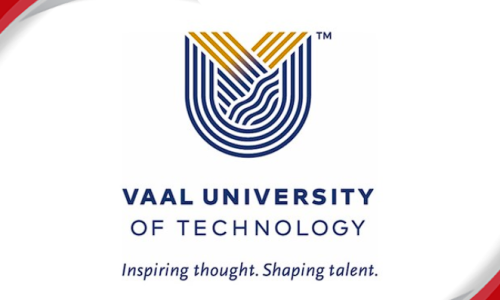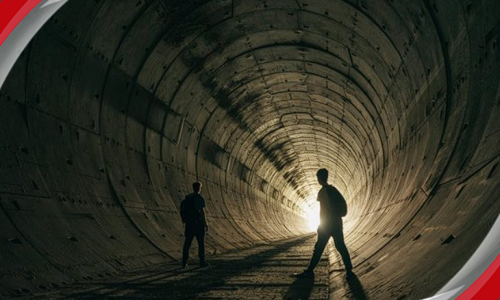Laying digital foundations for growth

Laying digital foundations for growth
- |
-
Aug 06, 2024
According to the South African Institution of Civil Engineering’s 2022 Infrastructure Report Card, South Africa is slowly collapsing. Painting a bleak picture of the state of our roads, rail, water and power infrastructure, the report card says we’re at risk of becoming a failed state because our infrastructure is currently unable to cope with normal demand and is, for the most part, poorly maintained.
Still, investment continues. President Cyril Ramaphosa told the Sustainable Infrastructure Development Symposium of South Africa in Cape Town earlier this year that R230 billion worth of projects are under construction, and that projects worth R170 billion are being procured.
One measure of a country’s success is how quickly it can put technology to work. Bongani Mthombeni, director of Smart Mobility at Royal HaskoningDHV, says the digitisation of the country’s essential infrastructure is important both for maintenance and future planning. Mark Walker, vice-president for data and analytics at IDC Middle East, Africa and Türkiye, says the right technologies and tools can be used to predict the expansion rate of cities, so that informed infrastructure development decisions can be taken. But cities are not built on planning alone, and four years after Ramaphosa announced the establishment of the Lanseria Smart City, a single sod has yet to be turned. The current focus of the project is on building a wastewater treatment facility, among other things.
Walker says that, in the past, planning was a lot less informed and there was a lot more guesswork because it wasn’t based on real data.
By providing a
digital
representation of an infrastructure asset, digital twins enable cities to better predict what is going to happen to that asset in the future, says Mthombeni.
The efficiency game
Visibility into infrastructure is important. When you’re running a city’s streetlight network or you’re in charge of making sure that all the fire hydrants across a municipality are in working order, being able to connect with these assets without having to physically check each one is an efficiency game changer.
At the City of Cape Town (CoCT), digital transformation is crucial to infrastructure development. Not only does it make cities become efficient, resilient and responsive to the needs of their citizens, but it also facilitates better planning, management and maintenance of infrastructure. According to a study by the Construction Equipment Management Programme, regular preventive maintenance can enhance equipment life by up to 60%. By ensuring that equipment operates at peak efficiency, operational costs can be reduced. This is one of the drivers behind the CoCT’s Core Application Refresh Programme (CAR), which aims to replace outdated IT assets. CAR forms the basis on which many planning and operational tools are developed, including the city’s project and programme management system, contract management system and the inventory, stock control and asset management systems, among others.
“When you’re so focused on plugging holes so that your assets don’t fail, there’s no way you can even think about the future.”
Bongani Mthombeni, Royal HaskoningDHV
Beyond CAR, the City Infrastructure Delivery and Management System is an infrastructure asset management system that includes a common digital asset register, which lists asset location, condition and capacity. Cape Town’s Service Request Data Analytics functionality analyses service request data, enabling the city to respond to citizens’ complaints more strategically. The CoCT is also using Geographic Information Systems (GIS) to map, plan and manage its key infrastructure.
Reliable electricity supply
This is what Chris Carter and his team at GeoAfrika Technologies do, using technology to provide a clearer picture of infrastructure assets. Sometimes, GIS maps are incomplete, presenting problems if a road has to be widened and the contractor doesn’t know exactly where the
fibre
lines, or water or sewer pipes and electrical services are located.
In cases like this, says Carter, it uses ground-penetrating radar. When you consider that what is below ground has a direct impact on that which is above, it’s important to locate and map these assets. But they’re not only using technology to see what’s happening under the ground. Carter says they’re also using drones to assess damage from natural disasters, like a flood. Similarly, when infrastructure assets like bridges are being built, drones can track progress of construction.
While these solutions hold potential, there are a number of hurdles to their successful implementation, such as funding and skills shortages. And power outages. “A major limitation in implementing some of our international solutions in the South African landscape is, of course, loadshedding,” says Mthombeni. “To keep data coming in to power these models, you need to have a constant and reliable electricity supply.”
She believes much of the country’s infrastructure failings are due to a lack of effective planning. The public sector may well be warned that critical infrastructure is going to fail, but widespread corruption means that the prioritisation of budgets is not for the future; it’s for right now. “Two years later, government is begging its engineers to come up with ways to stretch the asset’s life a little further,” she says. “When you’re so focused on plugging holes so that your assets don’t fail, there’s no way you can even think about the future.”
LIGHT AT THE END OF THE TUNNEL
For most of us, tunnel lighting is an afterthought. But there is a fair amount of science that goes into making sure that the levels of illumination at different points in a tunnel give our eyes enough time to adjust to changes in light. When the team at BEKA Schréder won the contract to replace the lighting in the Huguenot Tunnel – a route through the Du Toitskloof mountains, linking Paarl and Worcester – this was something they needed to think about.
The existing lighting was old and obsolete; the new luminaires replaced those that were originally installed when the tunnel opened in March 1988, says Riaan Bubb, senior sales engineer at BEKA Schréder.
As part of the upgrade to LED lighting, BEKA Schréder also installed an Advanced Tunnel Solution (ATS) control system, which makes it simpler to control the lights in different areas of the tunnel and enables a more precise lighting strategy. Having the right level of lighting at the entrance of a tunnel avoids what is termed the “black hole effect”, says Bubb, which is a lot like what you’d experience if you walked from a sunny day outside into a dark room. When the luminance levels inside the tunnel are lower than those outside the tunnel, our eyes have difficulty adapting to the sudden change in light. To mitigate this, Bubb and his team placed a camera just outside the tunnel entrance to measure light levels and these readings dictate how the lighting at the entrance of the tunnel should be adjusted so that the drivers’ transition into the tunnel isn’t too hard on the eyes.
The ATS system also improves maintenance processes, he says, adding that this is important as one can’t simply close the tunnel every time a light goes out. When you consider that there are over 6 000 lights in the tunnel, it’s essential to detect and remedy faults without having to physically check each and every luminaire. The ATS system makes it possible to pinpoint exactly where the fault is so that a maintenance team can go straight to that particular point and fix the problem quickly and easily.
Add a Comment
Related Resources
Get New Jobs Notification!
Sign up with your email address to receive news and updates. Subscribe to get our latest content by email. We respect your privacy, Unsubscribe at any time.

























Comments